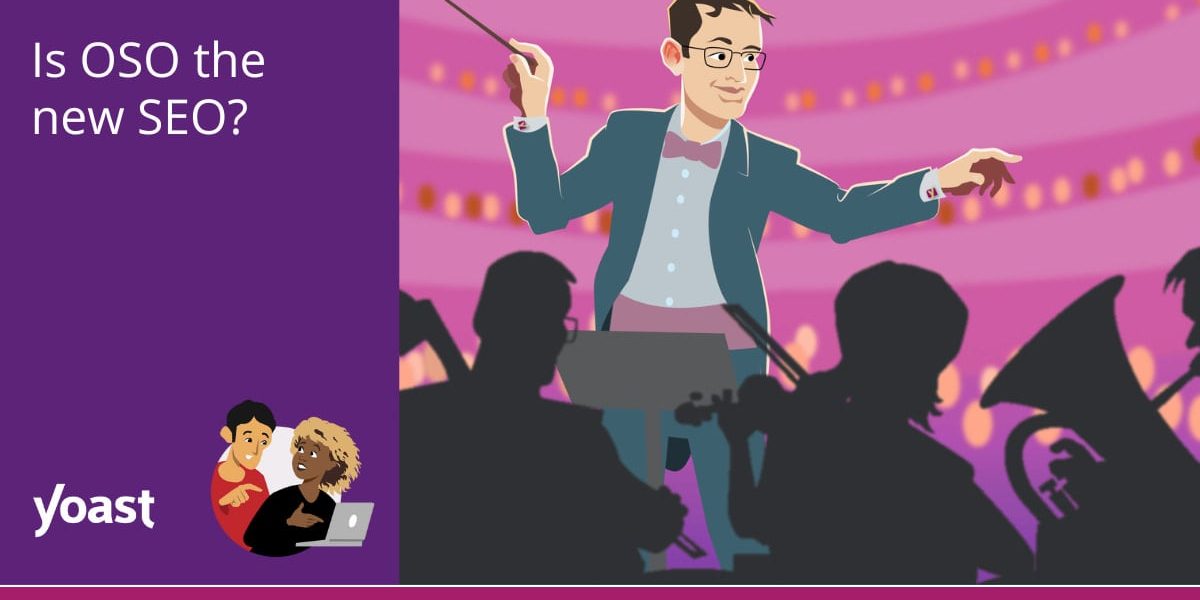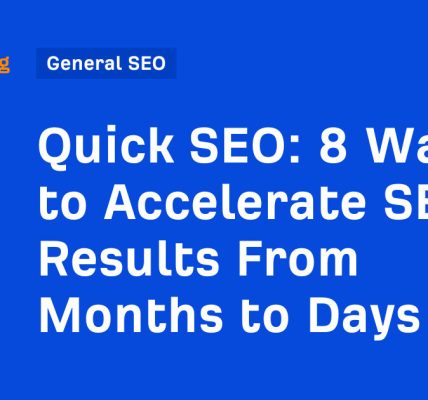There’s a new kid in town, and it’s one you want to be friends with: OSO. It stands for organic search optimization, and with the Search Generative Experience rolling out, this acronym is one you should pay attention to. It’s not here to replace our good old SEO. But it does want to change your thinking and the platforms you’re focusing on.
OSO is a relatively new acronym that adds a layer to SEO as we know it. Although I’ve seen different explanations of the acronym (optimized search optimization, organic search optimization), they all boil down to the same concept: multi-channel search optimization.
SEO vs. OSO: what’s the difference?
Where SEO is traditionally focused on getting your web pages high in the search results, the focus is shifting towards being present on different platforms, not just in the SERPs. Now, we have a good acronym for this new mindset: OSO. Naturally, you can continue working on getting your site traffic up, but you also need to think about the performance of your content in other places. Your website is no longer the only focus point; it’s one of (hopefully many) places where you can be found and contacted. Sure, you want to beat your competition and claim that first search result, but you also need to focus on overall branding online.
It comes down to seeing your website as part of the equation rather than the result. OSO wants you to be more. It wants you to become the best information source on all the channels where your audience can be found. It’s all-encompassing and ties all your marketing efforts together instead of being one part of it.
Where does this shift come from?
Online search continuously changes, and people are no longer just visiting your website. There are so many different places where you come into contact with them. Or want to come into contact with them. And when you do, you want to ensure their experience with you is pleasant and consistent. So your content needs to be high-quality and make purchases (or other actions you want them to take) possible in different places. Make sure to align your content and communication and be where your audience is. Don’t forget, that nowadays, even social media platforms act as search engines.
SGE and other AI-powered tools
Other good reasons to take organic search optimization (or OSO) seriously are the Search Generative Experience and Google AI Overviews, and the overall use of AI in search engines. This is an AI-powered search tool (by Google) that pulls from different places to generate an answer to an online query. SGE uses different sources to generate its results: online pages, customer reviews, social media posts, YouTube videos, etc. So, it’s not just focused on your website content. These AI tools will look at your content across platforms and use them to generate personalized results. Another reason why it pays to be present on multiple platforms and spend enough time on the content you’re sharing there.
So, do you need to make any changes?
Well, are you mainly focused on your website content? Or is your brand also represented on other online platforms? Either way, I suggest researching where your audience can be found. Which online platforms are they using, and with what intent? You need to be there and catch their eye. As written by Andrew Holland in this article on OSO by Search Engine Land:
Your job is to build nets… giant nets.
We need to go back to the drawing board and alter our priorities. Naturally, website content will remain high on the list. But you need to add more stuff to the list. Come together with your social media team and align your content, strategize with your email team, consider creating videos or podcasts, and even look at offline events you should attend. And if you are doing everything independently, set the right priorities. Spend enough time on your website, but also think of ways to broadcast your expertise in your field.
What would that look like?
To give you an idea of what that would look like, I would like to use Yoast as an example. We have the SEO blog you’re reading, which we’ve been using to reach our audience since the company’s launch. Of course, our newsletter and social media followed quickly after that. But we also speak at (and attend) SEO, development, WordPress, and marketing events. We host different types of webinars and create videos and podcasts. This strengthens our brand and shows our expertise in different places where our audience can be found.
It sounds like even more work…
This shift might cause you some worries regarding time management, but it also means that you can spend less time diving into data as this is becoming less important. So save time by obsessing a bit less over the numbers and invest that time in researching your audience and creating new (and fun) ways to reach them. This allows you to think more outside the box, which can also be exciting! And don’t forget that you’re also involving other team members, so you’ll have more people involved in your SEO (or OSO) efforts. Use their expertise, work on the content together, and find out what works for your team.
It comes down to building your brand
To recap what we talked about today, OSO is not that different from SEO. This new acronym reminds you to think beyond your pages and Google’s search results page. SEO is still here and going strong; it just continues evolving. And that means that you and your SEO efforts should, too. Good luck!





